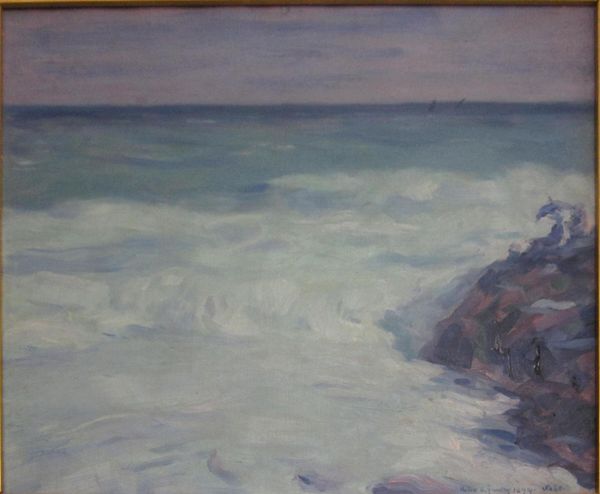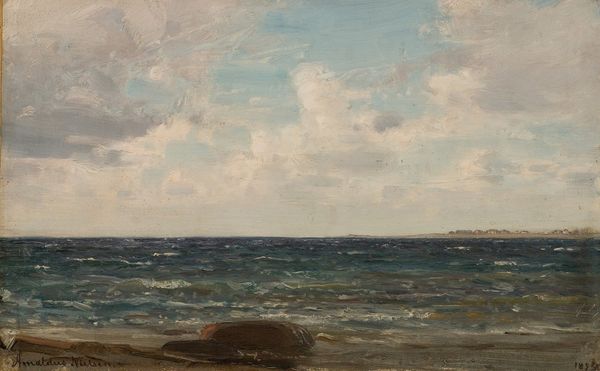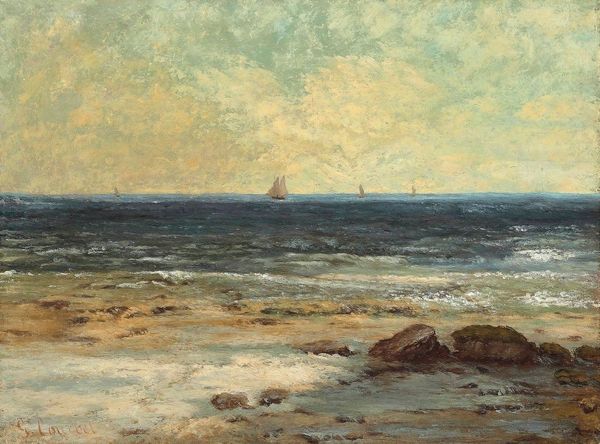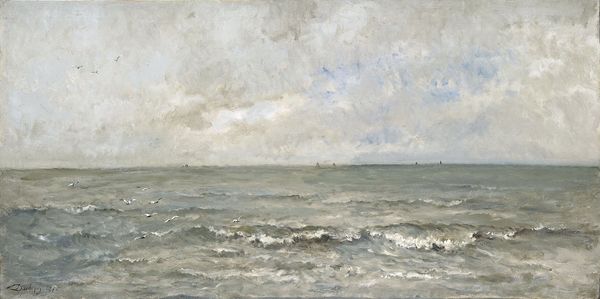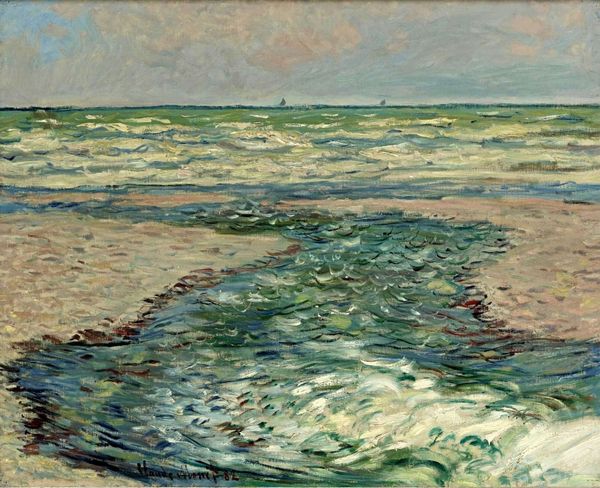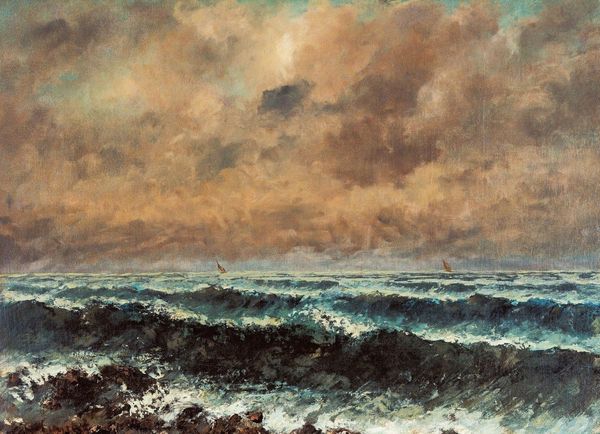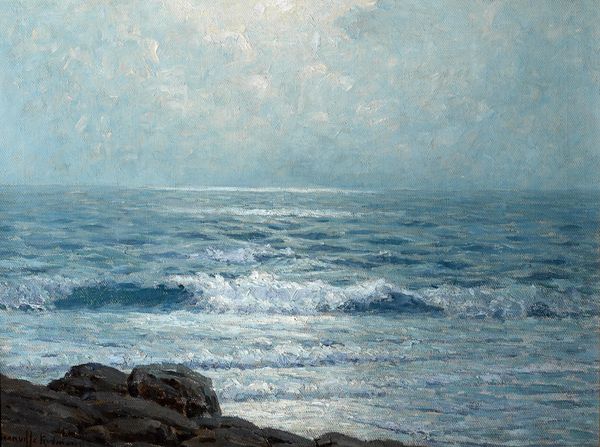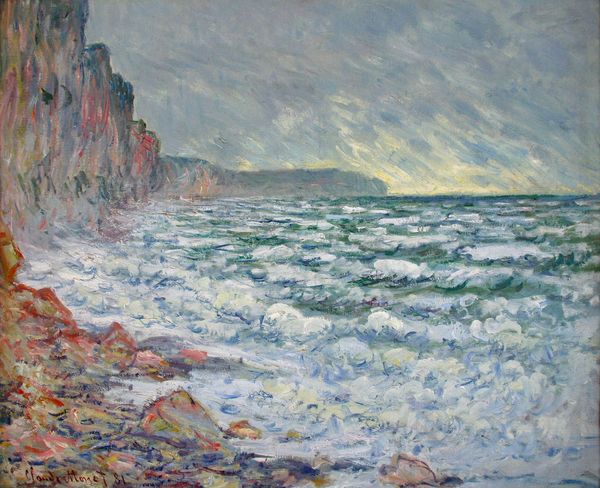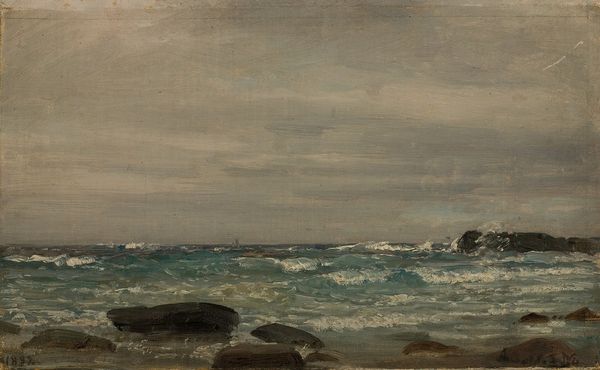
#
abstract expressionism
#
sky
#
abstract painting
#
impressionist painting style
#
impressionist landscape
#
possibly oil pastel
#
oil painting
#
ocean
#
fluid art
#
neo expressionist
#
acrylic on canvas
#
expressionist
#
sea
Copyright: Public domain
Curator: Looking at Claude Monet’s “The Sea at Saint-Adresse,” created in 1868, I’m struck by how he captures a specific moment in time at this coastal locale. Editor: It's immediately moody. That churning water and heavily clouded sky create a sense of impending weather. It is almost entirely cool blues and grays, but with hints of pale yellow light trying to break through. Curator: Indeed, Monet spent considerable time in his youth at Le Havre, close to Saint-Adresse, fostering a deep personal connection with the sea. What might appear as mere representation actually hints at the rise of leisure and tourism during that era. Consider that beaches became fashionable destinations for Parisians and this painting could symbolize a shift in social attitudes and the romanticizing of nature for the burgeoning middle class. Editor: That is a fascinating observation, placing it in social context. Structurally, Monet uses broken brushstrokes to convey movement and atmosphere. The way the light reflects on the waves, it's not photorealistic, but an impression. The composition leads your eye from the shore in the lower left, up and out to the distant sail boat near the center of the work. Curator: Right, his rapid brushwork was seen as radical then, and it challenged the academic standards that prevailed. It paved the way for a more subjective and personal experience of the art that was independent from institutions of that period. Editor: There is also an interplay between horizontal and vertical lines, where the flatness of the horizon is broken up by the energetic, almost aggressive application of the paint—very unlike the serene landscapes popular at the time. What do you make of that stark black sail in the distance? Curator: I think the solitary sail serves as an important reference to the socioeconomic activity in coastal towns dependent on maritime transport. Monet painted this not long before the Franco-Prussian War; so the social mood at that moment was perhaps one of apprehension, perfectly reflecting the cloudy day we are observing in the image. Editor: That makes complete sense. It is more than a sail; it is a visual representation of society in this fleeting seascape. I noticed something different after hearing your take, especially the use of that black against everything else; very subtly ominous. Curator: Well, it’s in moments like these when considering an artist’s social milieu brings renewed insight.
Comments
No comments
Be the first to comment and join the conversation on the ultimate creative platform.
